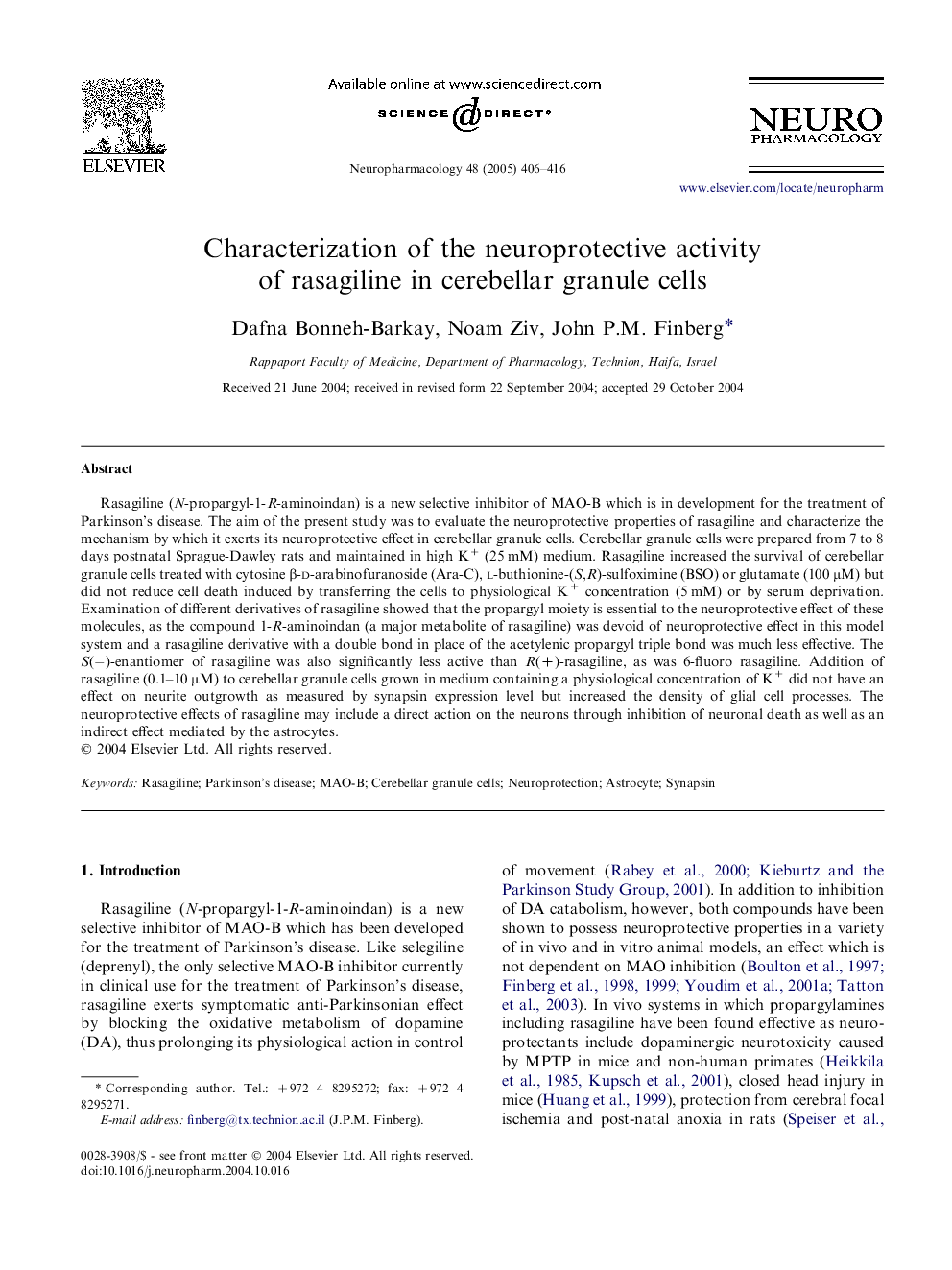| Article ID | Journal | Published Year | Pages | File Type |
|---|---|---|---|---|
| 8998249 | Neuropharmacology | 2005 | 11 Pages |
Abstract
Rasagiline (N-propargyl-1-R-aminoindan) is a new selective inhibitor of MAO-B which is in development for the treatment of Parkinson's disease. The aim of the present study was to evaluate the neuroprotective properties of rasagiline and characterize the mechanism by which it exerts its neuroprotective effect in cerebellar granule cells. Cerebellar granule cells were prepared from 7 to 8 days postnatal Sprague-Dawley rats and maintained in high K+ (25 mM) medium. Rasagiline increased the survival of cerebellar granule cells treated with cytosine β-d-arabinofuranoside (Ara-C), l-buthionine-(S,R)-sulfoximine (BSO) or glutamate (100 μM) but did not reduce cell death induced by transferring the cells to physiological K+ concentration (5 mM) or by serum deprivation. Examination of different derivatives of rasagiline showed that the propargyl moiety is essential to the neuroprotective effect of these molecules, as the compound 1-R-aminoindan (a major metabolite of rasagiline) was devoid of neuroprotective effect in this model system and a rasagiline derivative with a double bond in place of the acetylenic propargyl triple bond was much less effective. The S(â)-enantiomer of rasagiline was also significantly less active than R(+)-rasagiline, as was 6-fluoro rasagiline. Addition of rasagiline (0.1-10 μM) to cerebellar granule cells grown in medium containing a physiological concentration of K+ did not have an effect on neurite outgrowth as measured by synapsin expression level but increased the density of glial cell processes. The neuroprotective effects of rasagiline may include a direct action on the neurons through inhibition of neuronal death as well as an indirect effect mediated by the astrocytes.
Related Topics
Life Sciences
Neuroscience
Behavioral Neuroscience
Authors
Dafna Bonneh-Barkay, Noam Ziv, John P.M. Finberg,
